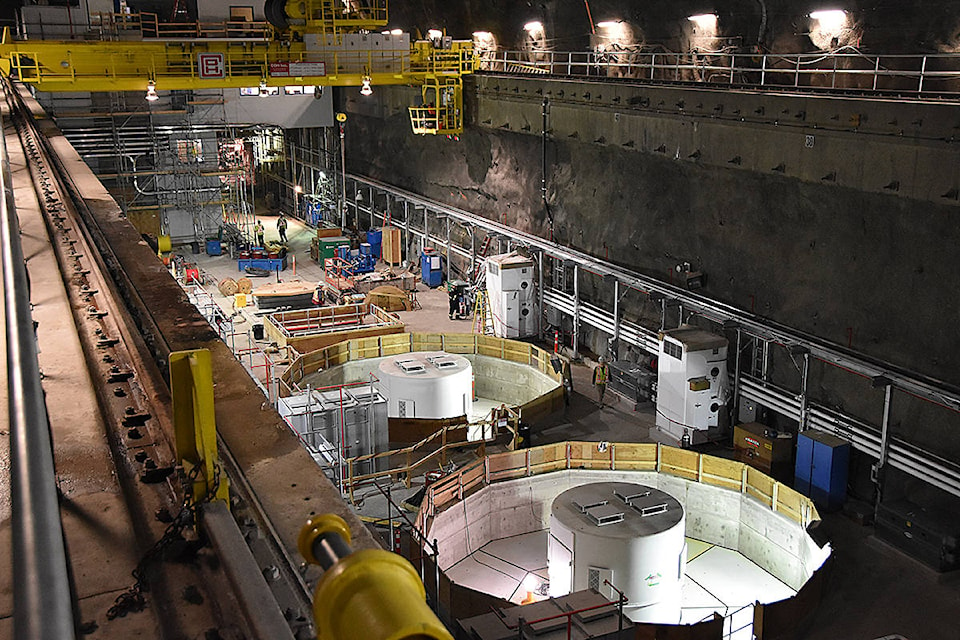The John Hart Generating Station Replacement Project recently achieved a final water flow operational milestone with the commissioning of the automated water bypass facility.
The three water bypass valves are in place within the underground powerhouse to protect downstream fish habitat from river flow reductions.
“The water bypass facility was commissioned in early May but has been on manual control until now,” said BC Hydro spokesperson, Stephen Watson. “The final test was on Nov. 8 when we had the three new generators, which have all been commissioned, shut down at the same time to mimic a full facility shutdown and have the required water flow redirected through the bypass facility to its full capacity to keep downstream flows in place. It worked exactly as intended.”
During the river flow test, the Campbell River flow was slowly increased from about 84 cubic metres per second (m3/s) to about 124 m3/s at full generation capacity. Then the three generators where shut down, with the water bypass kicking in to provide about 84 m3/s downstream. About 80 m3/s is needed to keep fish habitat within the Campbell River covered with water.
The new generators are all available and the water bypass is on automated standby should one or more generators go offline. It didn’t take long as one of the generators went offline on Nov. 13, with the water bypass properly initiating to maintain river flows downstream.
“As the contractor, we’re very pleased to have all the water flow facilities commissioned, and the water bypass facility operating as it should,” said Paul Sawyer, InPower BC’s CEO. “Since 2014, it has been a great team effort by SNC-Lavalin, Aecon, General Electric, and FMI to get these facilities operating as they are today.”
The John Hart project can provide about 132 MW of power, or nearly 10 per cent more power output than the old facility.
In addition to protecting downstream fish habitat, the other two project drivers of maintaining power generation reliability and being seismically strong were also achieved.
